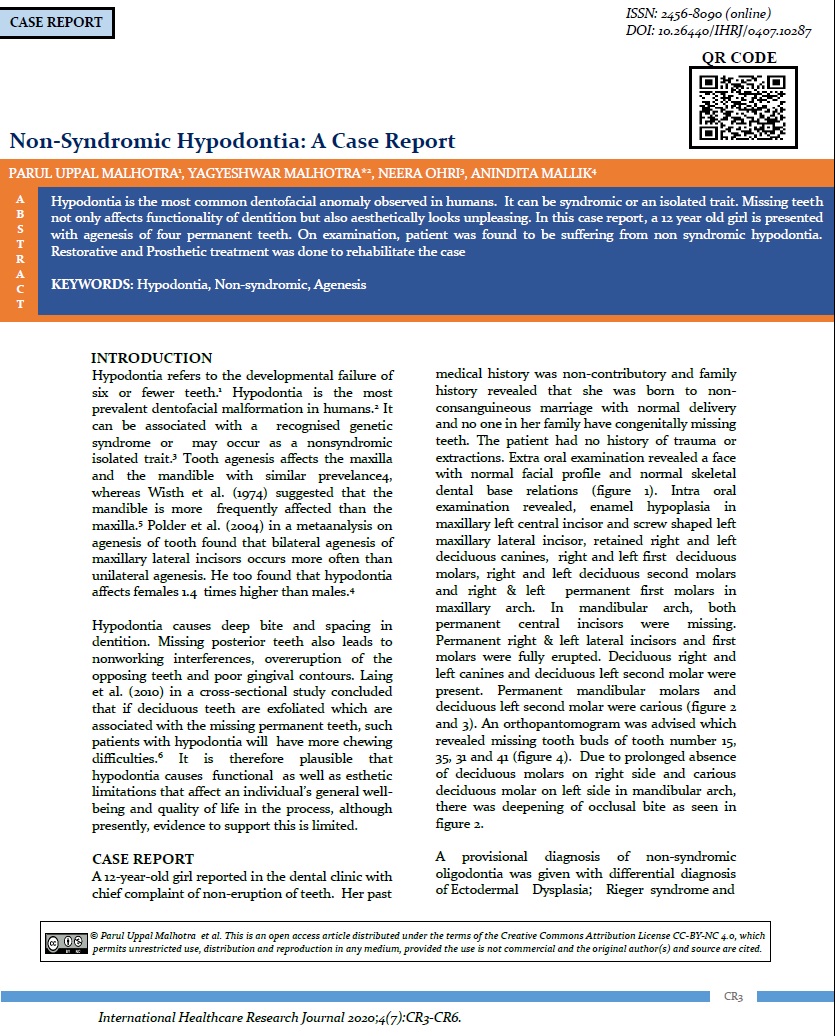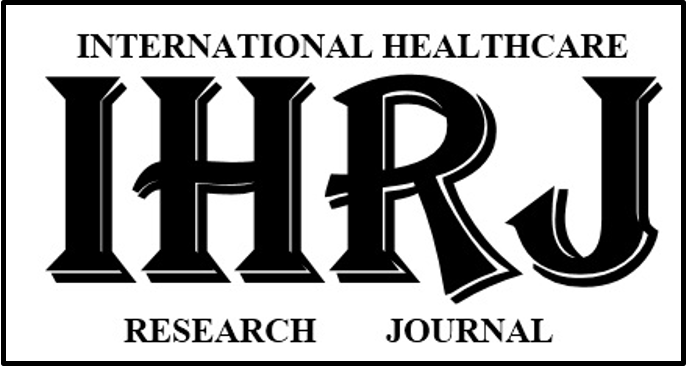Non-Syndromic Hypodontia: A Case Report
Abstract
Hypodontia is the most common dentofacial anomaly observed in humans. It can be syndromic or an isolated trait. Missing teeth not only affects functionality of dentition but also aesthetically looks unpleasing. In this case report, a 12 year old girl is presented with agenesis of four permanent teeth. On examination, patient was found to be suffering from non syndromic hypodontia. Restorative and Prosthetic treatment was done to rehabilitate the case
Downloads
References
Nunn JH, Carter NE, Gillgrass TJ, et al, The interdisciplinary management of hypodontia: background and role of paediatric dentistry. British Dental Journal 2003;194(5):245–51.
Matalova E, Fleischmannova J, Sharpe PT, Tucker AS. Tooth agenesis: from molecular genetics to molecular dentistry, Journal of Dental Research 2008;87(7):617–23.
Cobourne MT, Sharpe PT. Diseases of the tooth: the genetic and molecular basis of inherited anomalies affecting the dentition. Wiley Interdisciplinary Reviews: Developmental Biology 2013;2(2):183–212.
Polder BJ, Van’t Hof MA, Van Der Linden FPGM, Kuijpers-Jagtman AM. A meta-analysis of the prevalence of dental agenesis of permanent teeth. Community Dentistry and Oral Epidemiology 2004;32(3):217–26.
Wisth PJ, Thunold K, B¨oe OE. Frequency of hypodontia in relation to tooth size and dental arch width. Acta Odontologica Scandinavica 1974;32(3):201–6.
Laing E, Cunningham SJ, Jones S, Moles D, Gill D. Psychosocial impact of hypodontia in children. AJODO. 2010; 137(1):35–41.
Pinho T, Ciriaco C, Faber J, Lenza MA. Impact of dental asymmetries on the perception of smile aesthetics. AJODO. 2007; 27(5):443–9.
Carter NE, Gillgrass TJ, Hobson RS, et al. The interdisciplinary management of hypodontia: orthodontics. British Dental Journal 2003; 194(7):361–6.
Dhamo B, Vucic S, Kuijpers MAR, et al. The association between hypodontia and dental development. Clinical Oral Investigations 2016; 20(6):1347–54.
Singh AP, Boruah LC. Nonsyndromic oligodontia in Permanent Dentition of three siblings: A case report. JIDA. 2009;3:117-9.

Copyright (c) 2020 Parul Uppal Malhotra et al.

This work is licensed under a Creative Commons Attribution-NonCommercial 4.0 International License.


